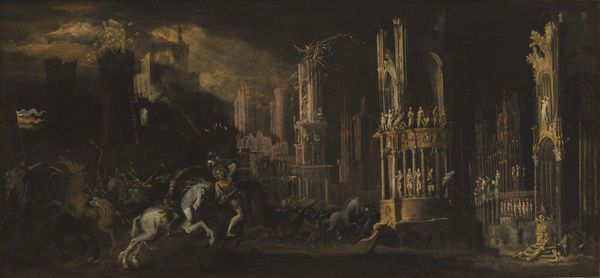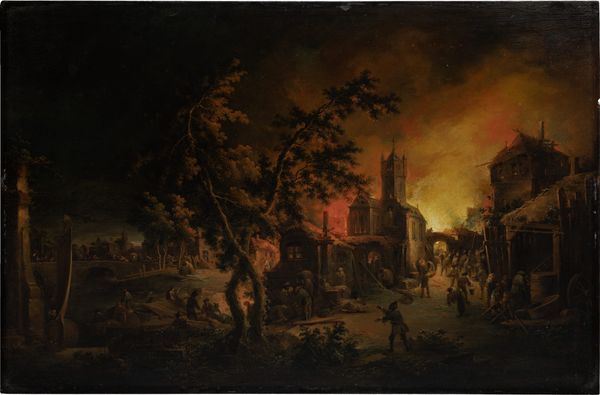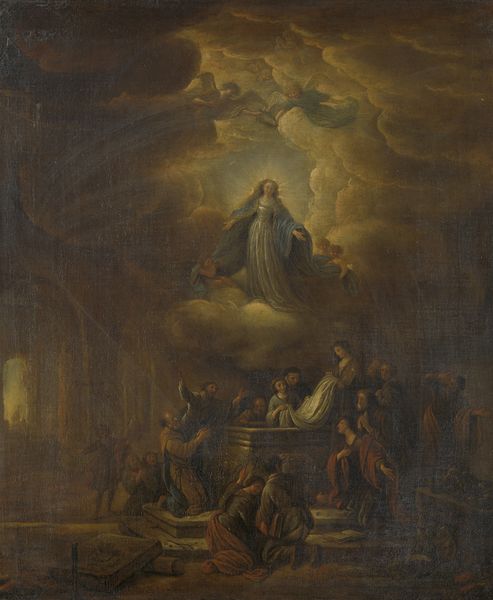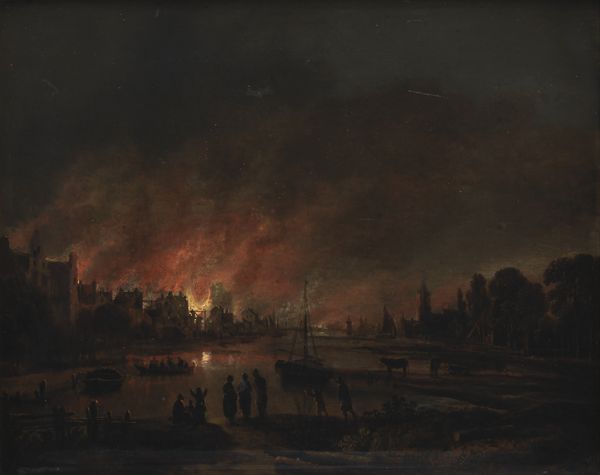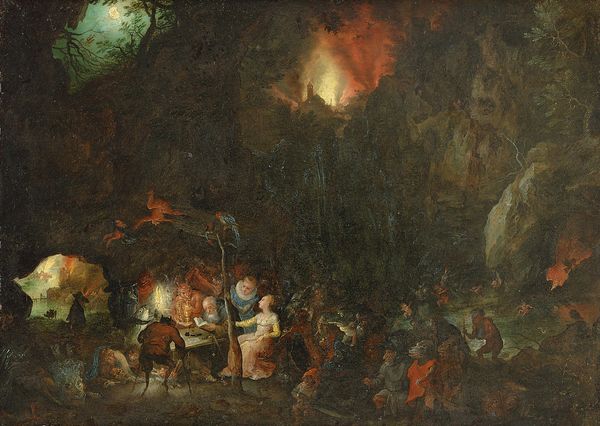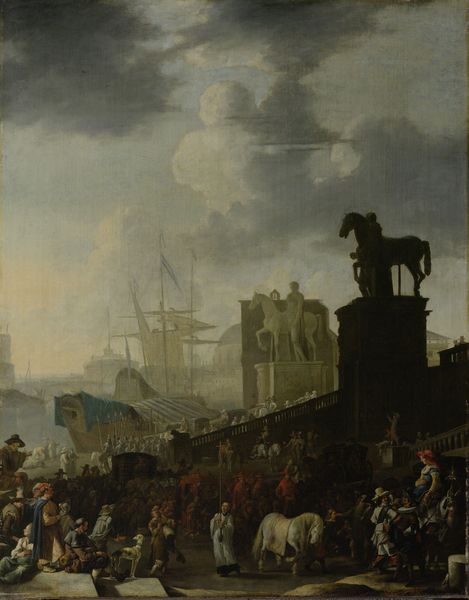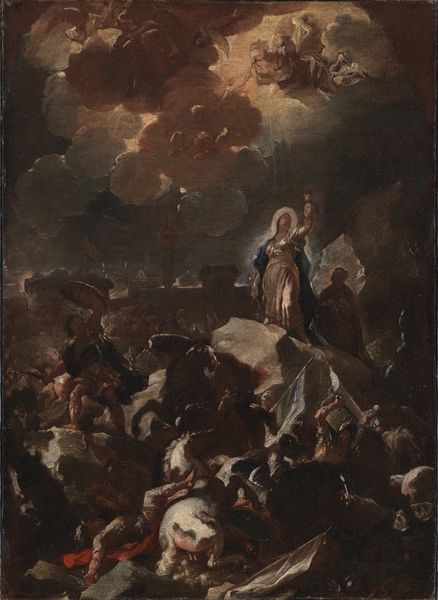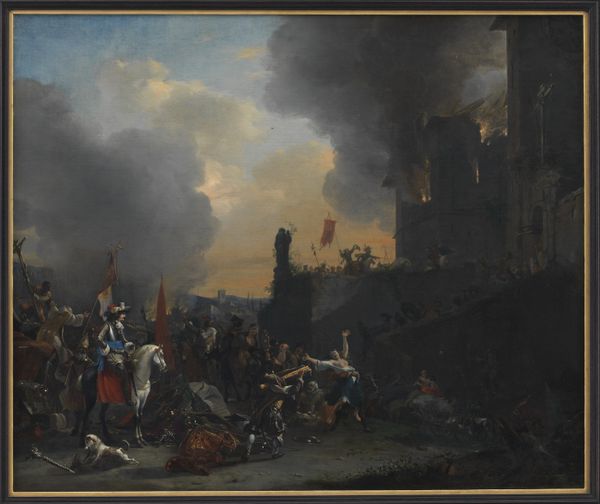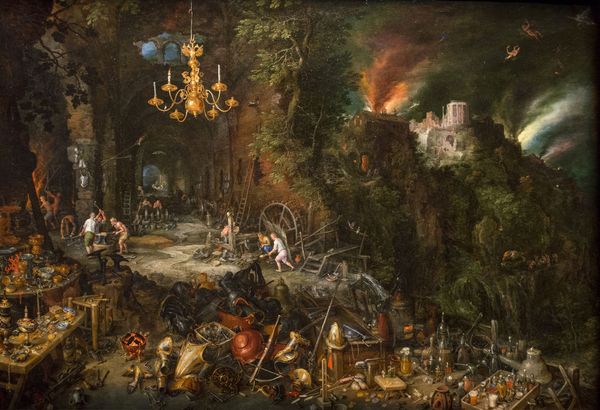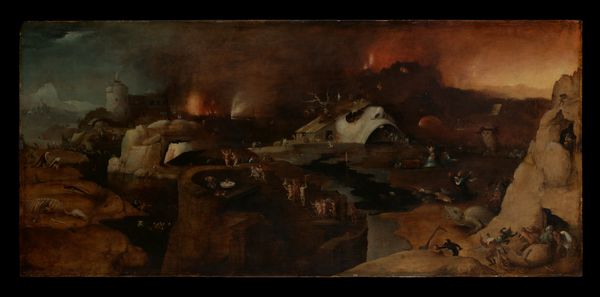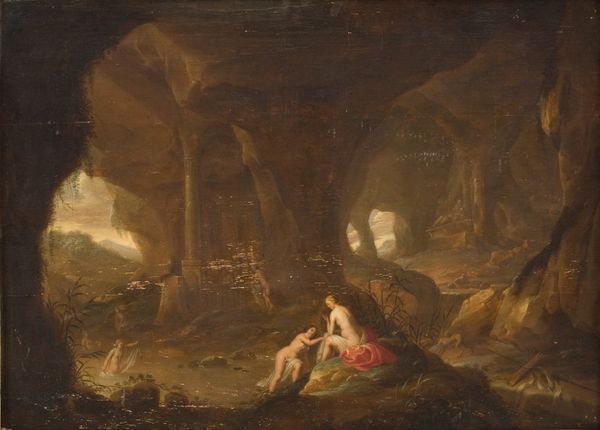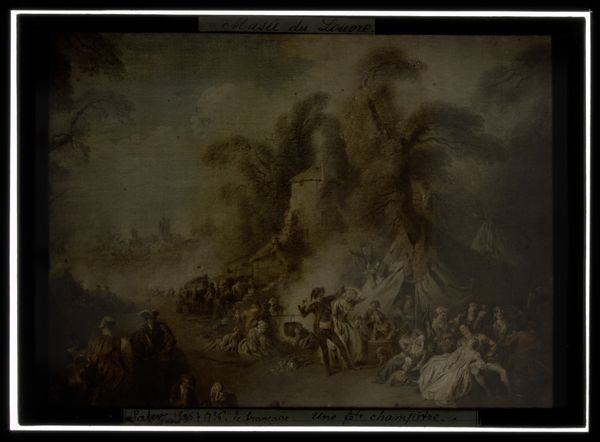
panel, painting, oil-paint, wood
#
panel
#
narrative-art
#
baroque
#
dutch-golden-age
#
painting
#
oil-paint
#
landscape
#
fantasy-art
#
figuration
#
oil painting
#
painting painterly
#
wood
#
mixed media
Dimensions: 39 cm (height) x 49.5 cm (width) (Netto), 57.3 cm (height) x 66.8 cm (width) x 7.3 cm (depth) (Brutto)
Cornelis Saftleven made this oil on canvas painting, called "The Vision of the Sunday Child," in the Dutch Republic. Here, Saftleven depicts a chaotic scene of superstition and folklore, reflecting the anxieties of his time. We see a confluence of popular beliefs from astrology to witchcraft. The bizarre imagery creates meaning through its cultural references to the fears and fascinations of the 17th-century Dutch society. It’s a time when the rationalism of the Enlightenment began to challenge traditional beliefs, though these still held a strong grip on the popular imagination. Saftleven seems to comment on the credulity of the masses, perhaps critiquing the social structures that allowed such beliefs to thrive. To understand this work better, we can look to period pamphlets, popular literature, and the records of witch trials. The social history of art reminds us that its meaning is always shaped by its cultural context.
Comments
No comments
Be the first to comment and join the conversation on the ultimate creative platform.
